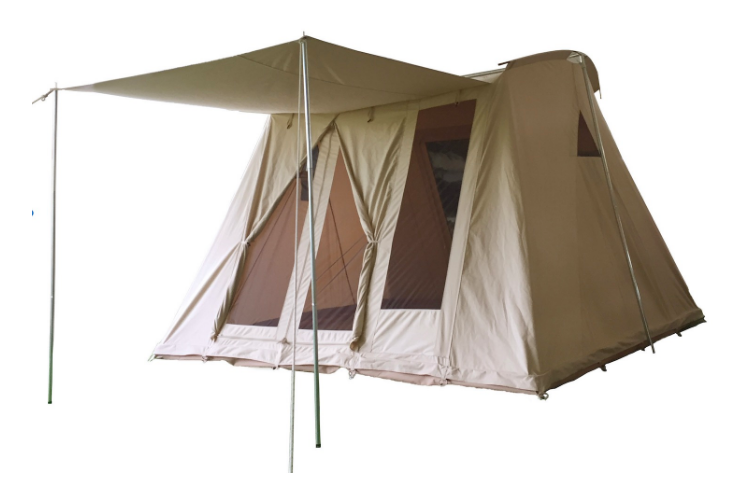- E-mail: info@sundaycampers.com
- Tel.: +86 15801504548
Spring bar tents are made from natural cotton canvas, which can be susceptible to mold and mildew if stored wet. To avoid damage, always ensure your tent is completely dry before storing it. If you need to pack up in wet conditions or early in the morning when dew is present, set up the tent again as soon as possible at home to allow it to dry thoroughly before long-term storage. Extra caution is needed in high-humidity climates where mold and mildew thrive.
For minor mildew issues, clean the affected area with a diluted white vinegar solution (5 parts water to 1 part vinegar) and a soft bristle brush. Rinse with water and allow the tent to dry completely before storing.
Before storing your Spring bar tent for an extended period, ensure that it is free of dirt and debris. Make sure the tent poles are dry and free of sand or debris as well. Using a ground tarp is highly recommended to protect the tent floor and keep it clean. To maintain the zippers, keep them clean and occasionally treat them with a silicone zipper lubricant to ensure smooth operation.
The best way to clean a Spring bar tent is with water, a soft bristle brush, and allowing it to dry completely. Avoid using harsh detergents or soaps that may compromise the water repellency treatment.

Set up your Spring bar tent at home before heading to the campsite. This practice will help you become familiar with the setup process, address any questions, and ensure a smooth experience when you reach your destination.
Spring bar tents are made from 100% cotton canvas, tightly woven and treated for excellent water resistance. The canvas strikes the perfect balance between water repellency and breathability, keeping the interior comfortable. While not "waterproof" like plastic or synthetic tents, Spring bar tents are highly reliable in wet weather and will keep you dry. During heavy rainfall, you might notice a light "misting" inside due to hydrostatic pressure—this is normal and not considered a leak.
The water-repellent treatment on the canvas lasts for many years under normal use. However, if needed, you can re-treat the fabric with a spray-on water repellency treatment.
Spring bar tents are made from flammable materials, so always keep open flames away from the tent canvas. Follow basic fire safety precautions to ensure a safe camping experience.
Seasoning a canvas tent is straightforward but requires following a few key steps to ensure proper waterproofing.
Choose a sunny, dry morning for the best results. Set up your tent in a safe spot in your backyard where it won’t be disturbed. Close all windows, doors, and openings, ensuring the tent is stretched tightly.
Saturate the tent by spraying it thoroughly with a long hose or set up a sprinkler to simulate rainfall. Pay special attention to soaking the seams. Once the tent is fully waterlogged, leave it to dry in the sun.
Allow the tent to dry completely until it feels hot to the touch. Repeat the soaking process, making sure the canvas is stretched tight. As the tent dries a second time, the fibers will swell and seal any small gaps. Repeat one final time for the best results.
Once the tent is fully dry inside and out, it’s ready for use. Pack it up and store it until your next camping adventure!